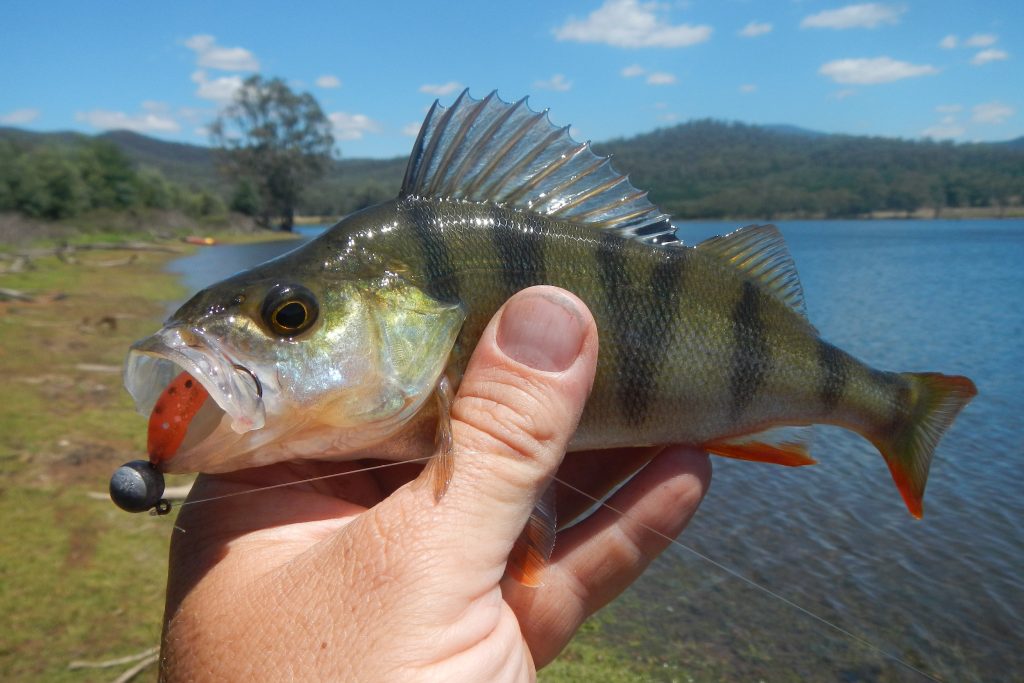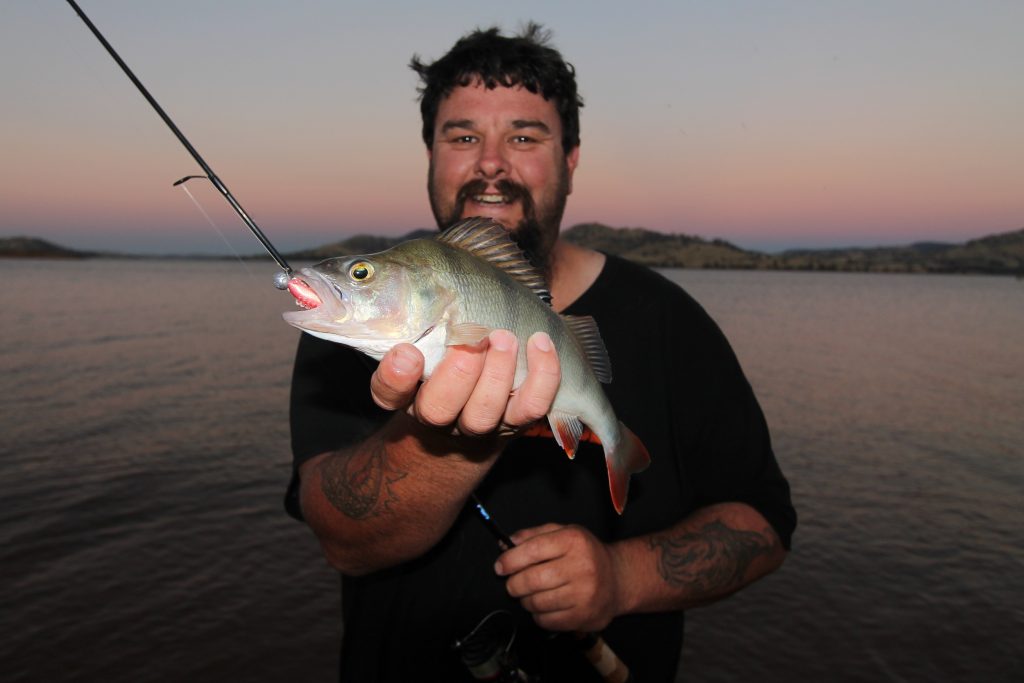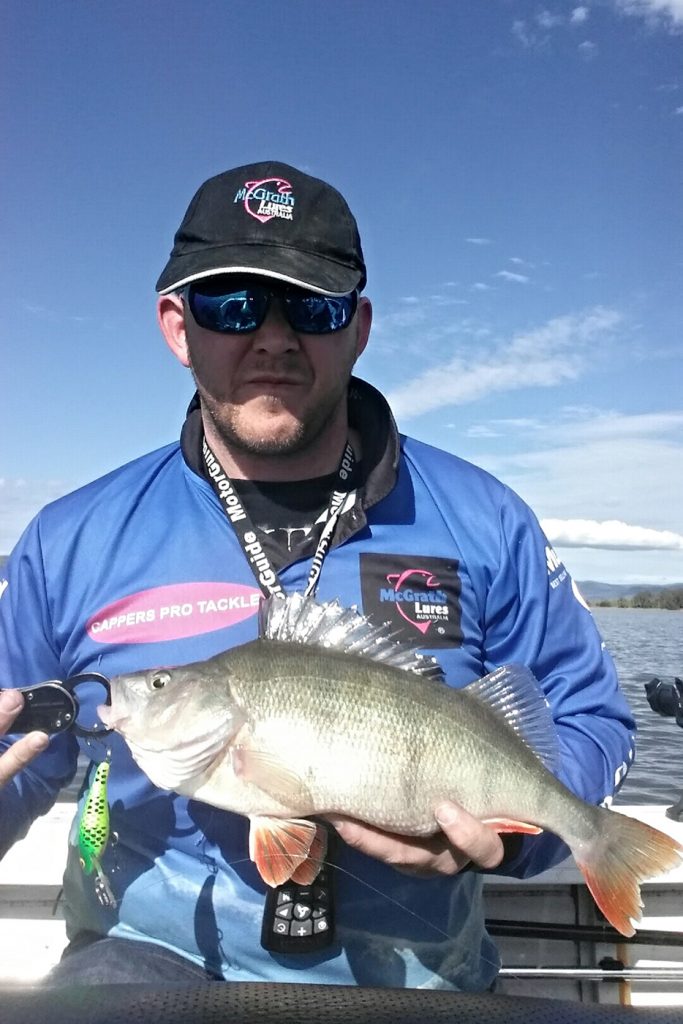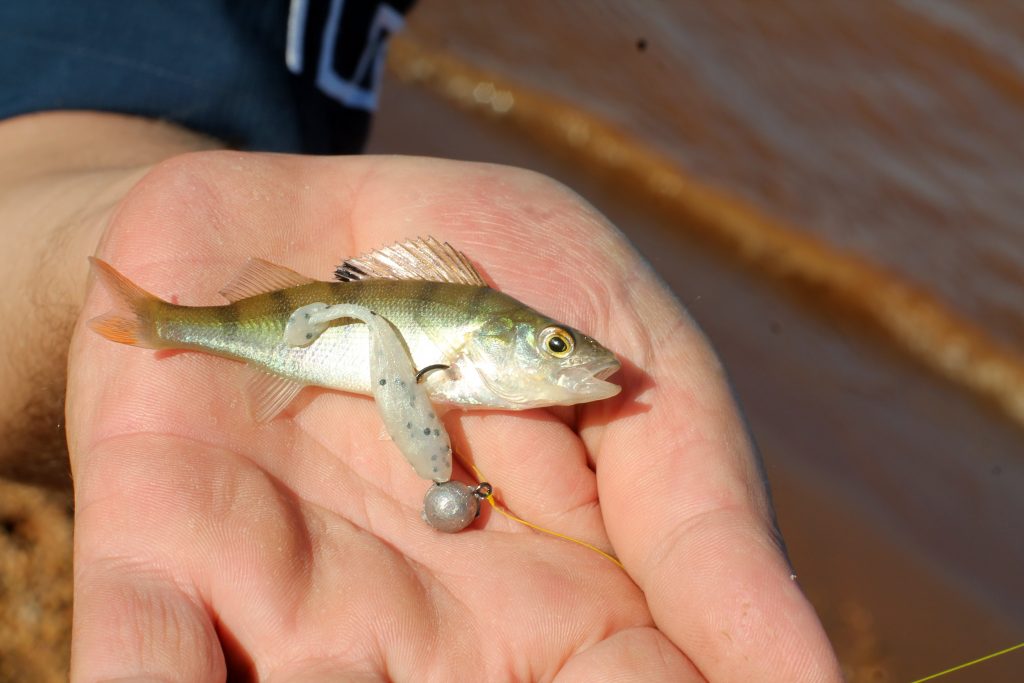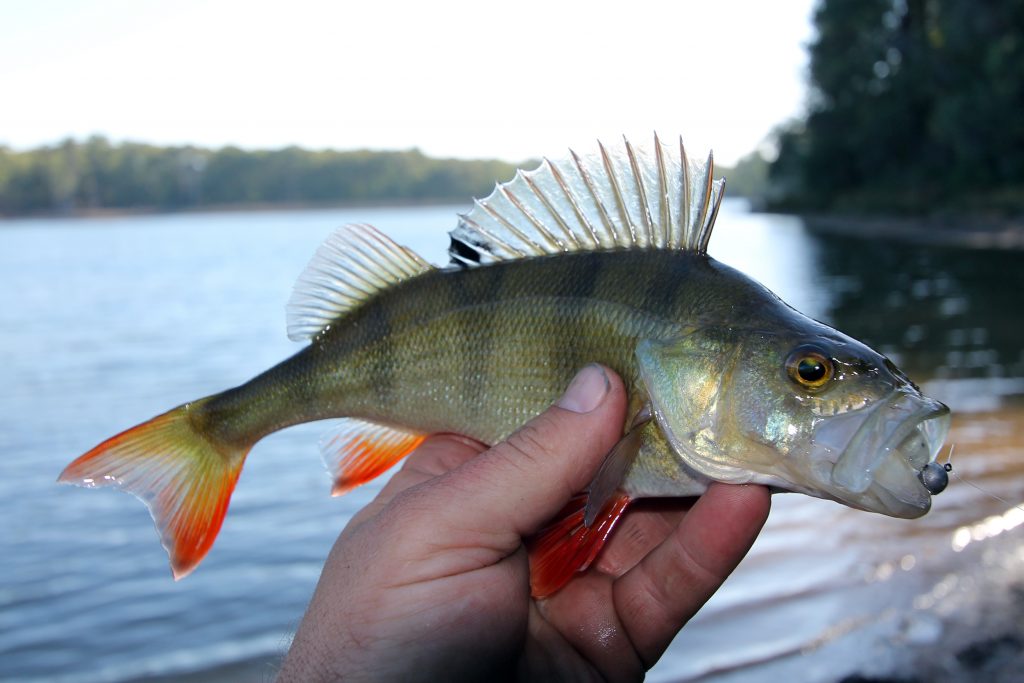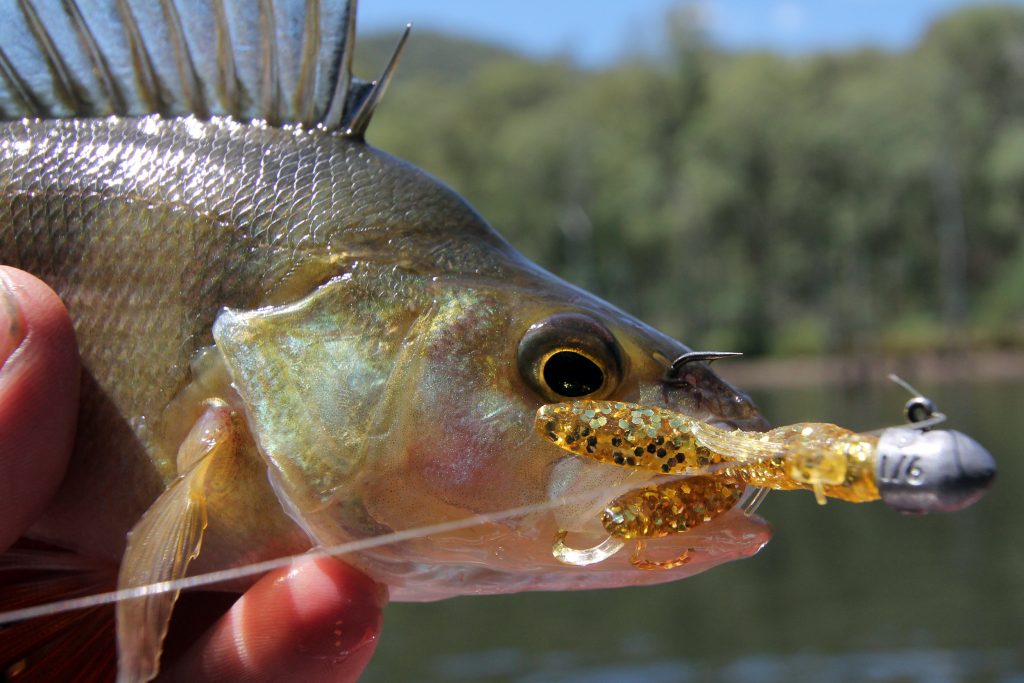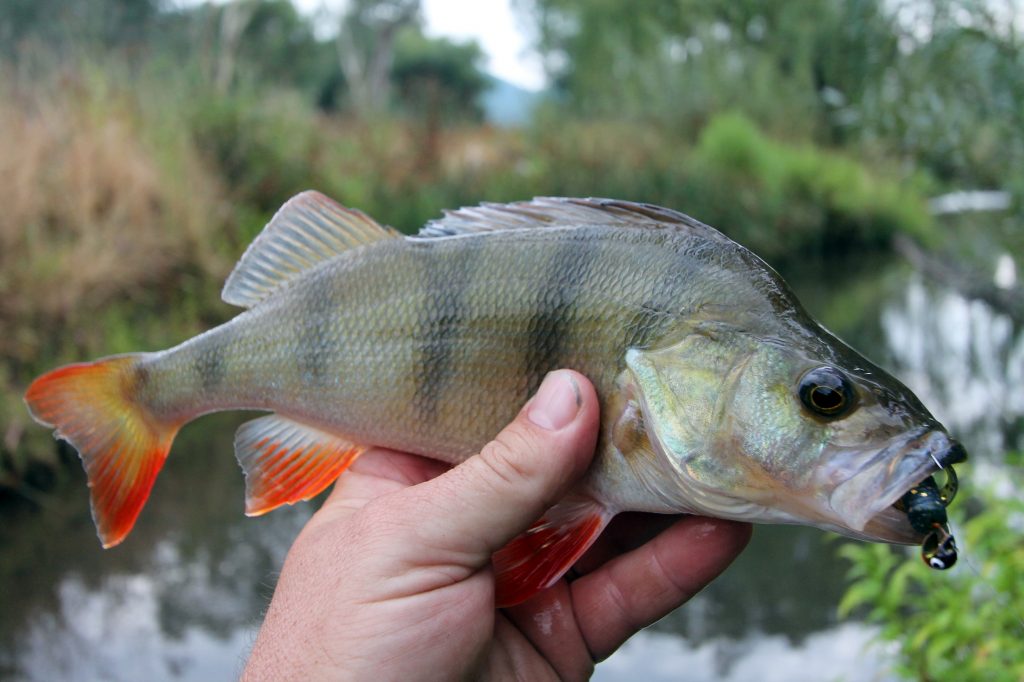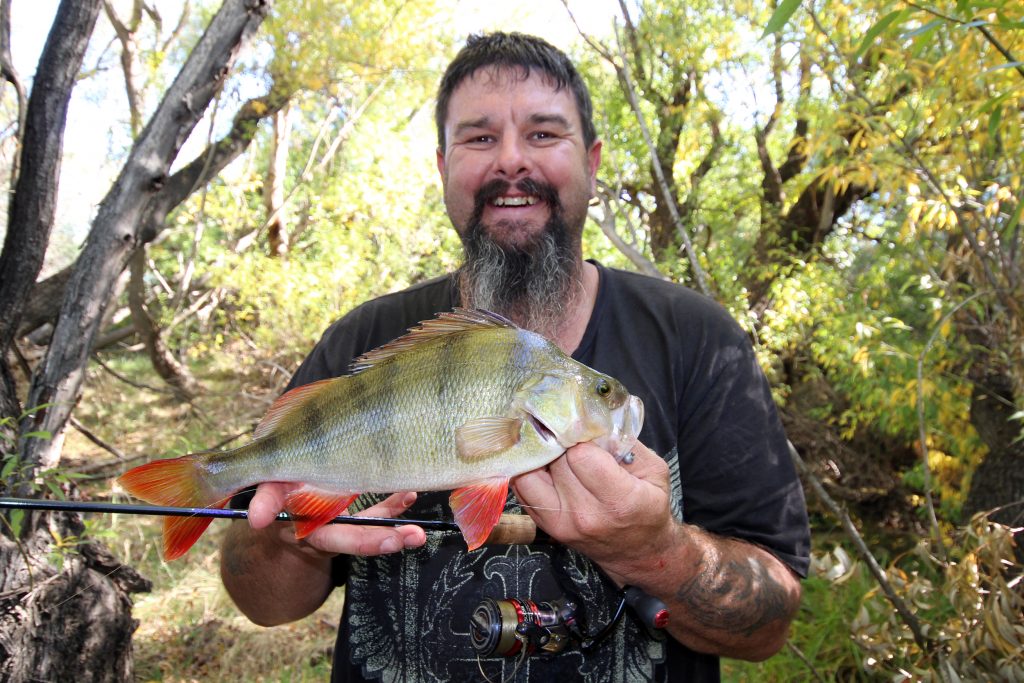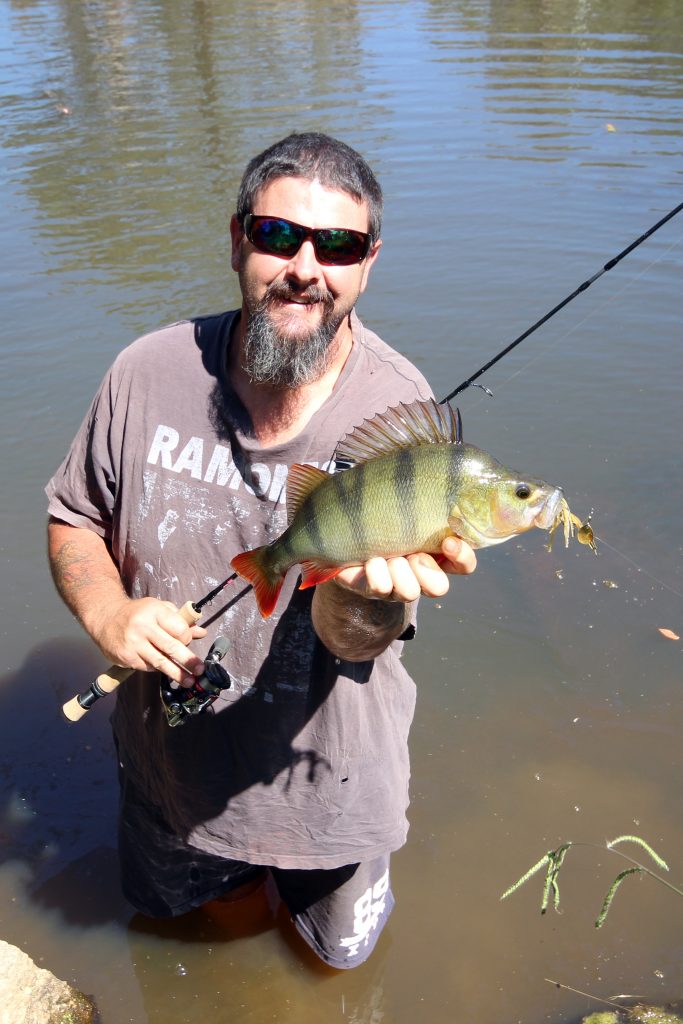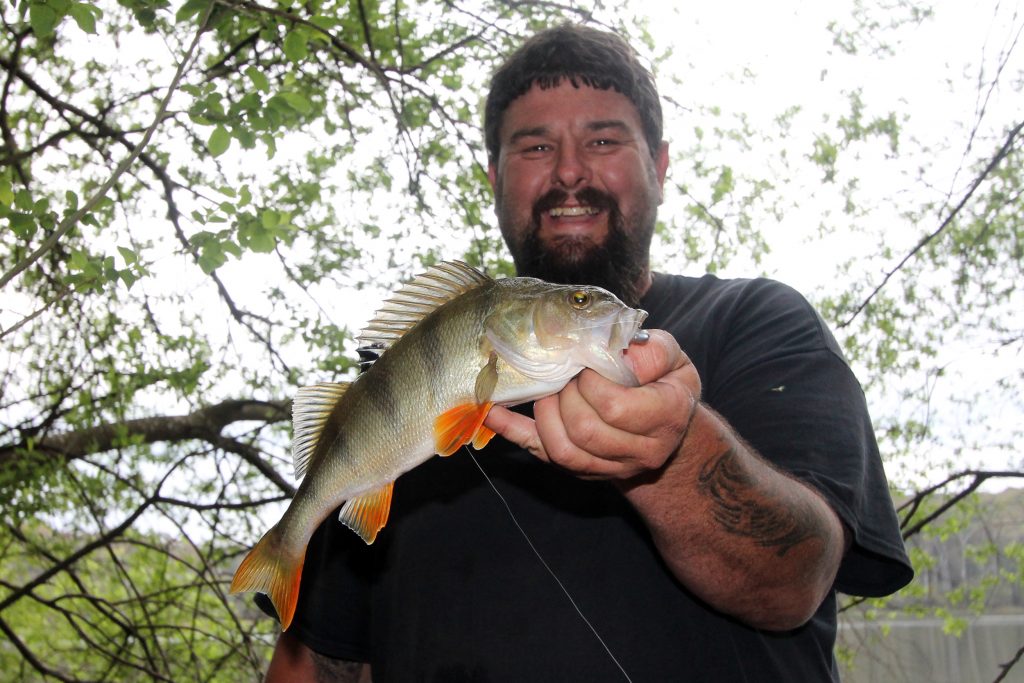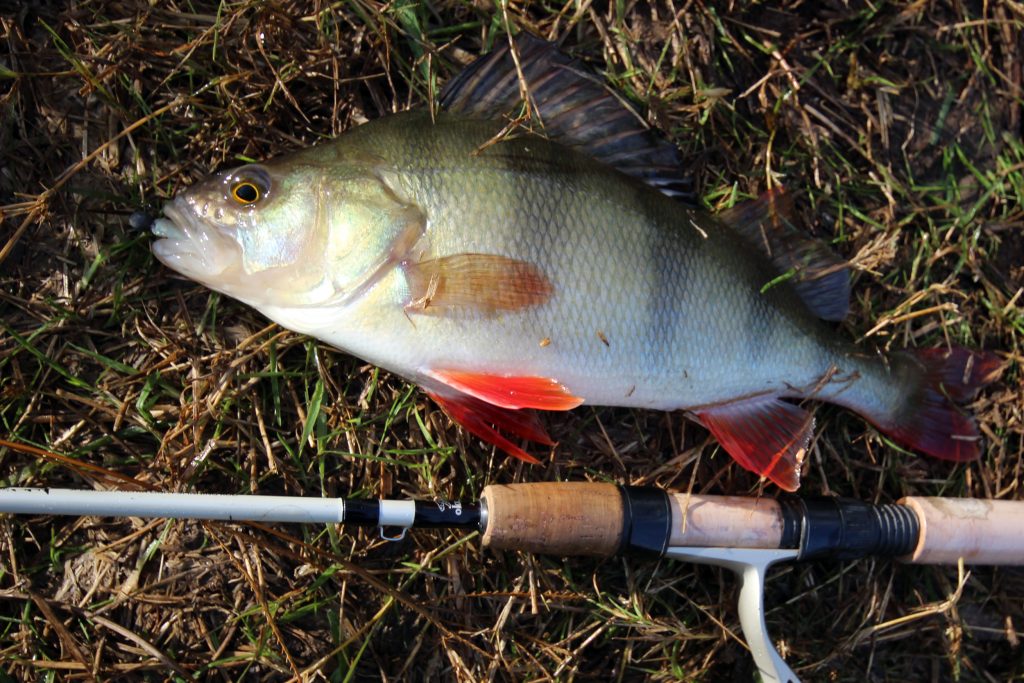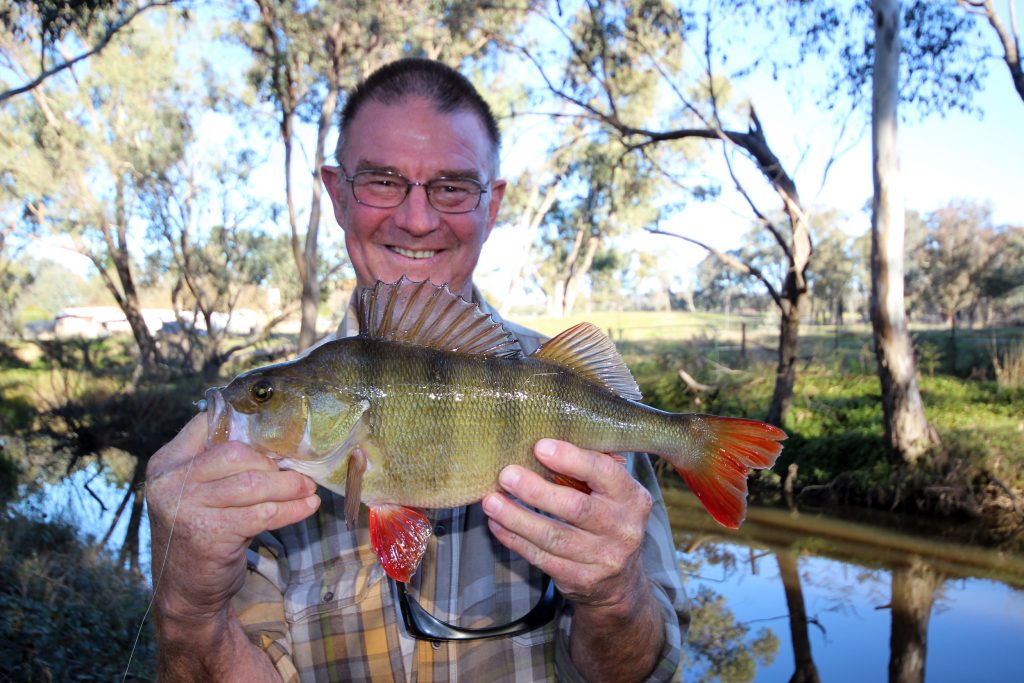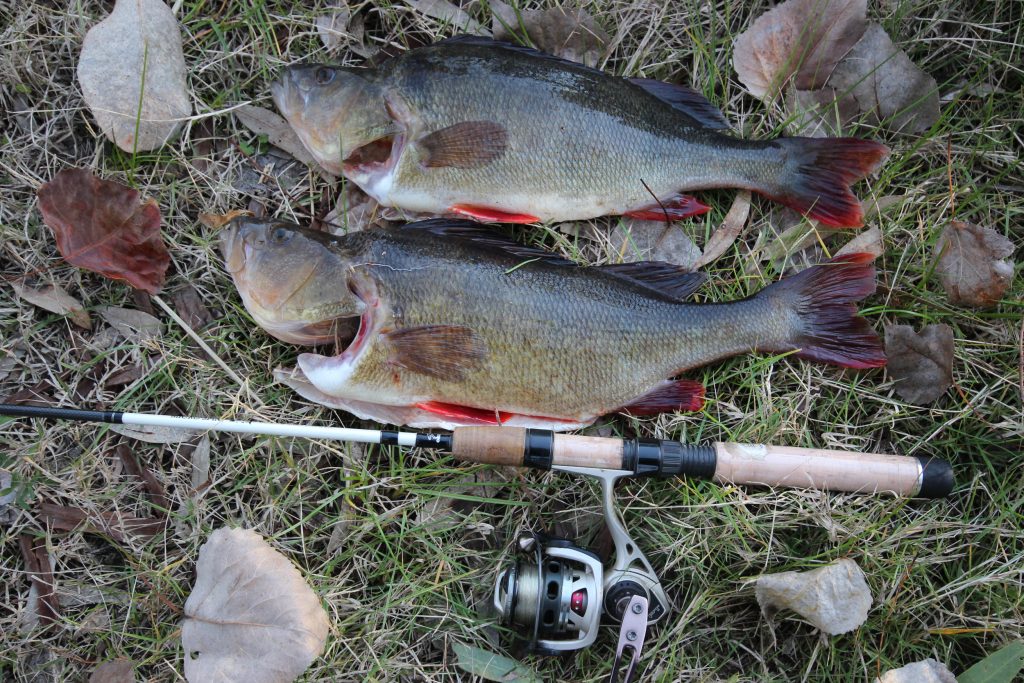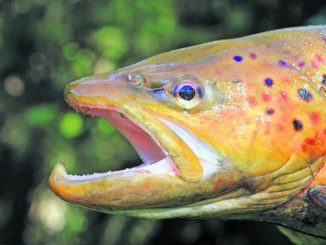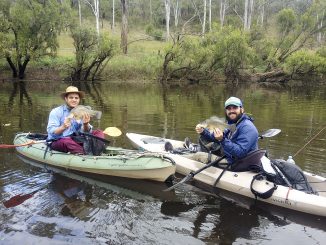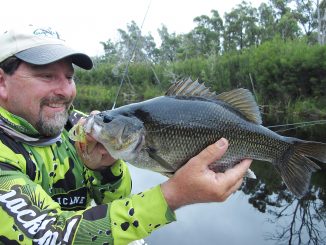
by Robbie Alexander •
November is a transition month for many fish species and many anglers here in North East Victoria. We see the trout begin to slow down in the many small streams as the water starts to warm up, but we generally see the perch fishing pick up as they begin to get more active in the warmer months.
In this area, there are two main species of perch targeted by anglers, they are the Australian native golden perch, otherwise known as yellowbelly, and the English perch, which most people refer to as redfin.
Redfin History
First, let’s look at the background of redfin. Redfin were introduced into Australian waters from Europe in the 1800s for angling purposes. Redfin were bred and distributed throughout the temperate zones of Australia and by the 1890s they were introduced into waters in Western Australia.
It wasn’t until the mid 1900s that the redfin really gained a foothold and took off. Anglers were relocating them to new waters, as they were a praised catch and soon redfin dominated many waterways.
Because redfin are such a wonderful sportfish with their hard-fighting abilities, and fantastic white juicy flesh being great on the table, they have escaped a lot of the persecution and negative stigma that the more infamous European carp have faced.
Fishy facts
Redfin are highly destructive on native fish species. They compete for food, can harbour fish diseases, eat fish eggs and prey heavily on newly hatched fish fry, resulting in poor recruitment for native fish.
Macquarie perch and silver perch are probably the most affected fish by the introduction of redfin. Some fish species survive well with others, and some compete. Where there is competition, usually one species will become dominant.
When redfin exist in a waterway with Macquarie perch, redfin usually come out on top because they are such a dominant and aggressive species of fish, as opposed to the shy, laid back nature of the Macquarie perch. Macquarie perch numbers usually decline in such environments, and can even become extinct from that system.
On the other hand, when redfin exist with golden perch, which can grow much larger than redfin, the golden perch will dominate, and the redfin numbers will eventually decline.
Redfin live quite well with other imported fish species such as trout and carp, where they seem to survive well together, possibly due to the different eating habits and water temperature tolerances. When the trout are most active in the coldest water, the redfin are quiet. As the trout slow down when the water begins to warm up, the redfin become more active. In a sense I guess the two species take it in turns to feed throughout the year!
When redfin exist in a waterway with Murray cod, the Murray cod will always dominate. Redfin will eat the Murray cod fry, resulting in poor natural recruitment for the Murray cod, but before long the redfin will usually end up eaten by the large and aggressive Murray cod. The biggest redfin in the world would still be on the menu for these large native Australian predatory fish. It is quite possibly due to the abundance of small redfin that Murray cod growth rates have been so fast in lakes such as Blowering and Eildon. Redfin can become something of a self-sustaining smorgasbord for the cod!
Reddies to fishing
It’s not all doom and gloom for the redfin, as they have many positives as well, which is why they are such a loved species of fish for so many Australian anglers.
As mentioned, they have magnificent white juicy flesh, which is quite sought after by many anglers. They are a great sportfish and larger redfin can fight very well for their size. They are self sustaining, which means that anglers do not need to rely on stocking to ensure they have somewhere to go fishing, and best of all….they are easy to catch, making them the ideal fish species to target when introducing kids to the wonderful sport of fishing.
Redfin do tend to overpopulate waterways, resulting in a stunting of their size as they clean away any food sources quite quickly. As a result, quite often anglers chasing redfin can fish a location and catch dozens, even hundreds of small redfin without actually catching one big enough to keep.
I remember back in 2011, my best mate Sandy Hector and I fished Lake Eildon from Sandy’s boat with soft plastics. We caught approximately 120 redfin (give or take some… it’s always hard to count past five or six). All day we just kept on catching small redfin, hand over fist… one after another. Of all of the redfin we caught, we never kept a single redfin. Not one was big enough! The following year, I returned with my kayak and caught about a dozen redfin and kept half of them.
What often happens when redfin overpopulate is that there will always be those few that will be a bit bigger than the rest, that can start feeding on the smallest redfin, as they are highly cannibalistic. Once they eat a few small redfin, their growth rates skyrocket and they quickly become the large, rogue, killing machines that clean up many small redfin. That’s why quite often, when you are catching stacks of small redfin, occasionally one will turn up that is bigger than 10 of the small ones put together!
Techniques
Redfin are an easy species to catch and can be caught by many different techniques. My favourite technique for targeting redfin is with soft plastics. I find that redfin cannot allow a brightly coloured soft plastic to swim past their nose them trying to attack it.
My favourite is the Strike Tiger 2” Curl-Tail Grub in whitebait pearl colour. The size of the jighead I use depends on how far I need to cast, or how deep the water is. I like to use the lightest jighead possible. Something around 3g is great for redfin, but may take a while to sink, and may not cast far enough. In this case, a 5g jighead may be beneficial, or even a 7g jighead in deep water.
Bladed spinners work exceptionally well on redfin, so too do small minnows, blades, and lipless crankbaits. When trolling for redfin in a lake, I like something really bright that gets down deep. I often troll with a Halco Crazy deep in fluorescent colours.
If bait fishing, worms will work very well. Small yabbies are also a great redfin bait, so too are live shrimp. If you are catching stacks of small fish, sometimes you can put on a larger yabby that many of the small fish will not attempt to eat. It may sit there for a long time and not get a bite, but when it does there’s every chance it may be a half decent redfin. When I am bait fishing for redfin from a boat, I usually set up a second rod with a large yabby, and refer to this rod as ‘the night watchman’. When I get a bite on that rod, I get very excited!
Here is a list of the more popular North East Victorian waterways that have redfin, and a bit of an overview:
Lake William Hovell • Possibly the best redfin fishery in the region, it has a huge population of redfin, most of which are small. Larger redfin to more than 2lb do exist and are caught occasionally. Small yabbies and soft plastics work well.
Lake Buffalo • Buffalo is not the redfin fishery it used to be due to the stocking of golden perch and Murray cod. Redfin do still exist, and there are some large fish to over 3lb to be caught by lucky anglers. Trolling bright coloured deep diving minnows works well. Golden perch are a very welcome by-catch for redfin anglers, just like Lake Buffalo’s redfin are a welcome by-catch for anglers targeting golden perch.
Lake Sambell • Sambell as a reasonably good population of redfin, with some fish to 35cm turning up from time to time. Soft plastics rigged with a weedless jighead can work well. Golden perch are a welcomed by-catch when targeting redfin.
Lake Kerford • This is the author’s favourite redfin lake. There are millions of tiny redfin in this lake. Catching one big enough to keep is quite rare, however it is such a fun place to fish. Tiny soft plastics work well in here, particularly of an evening.
Lake Hume • Lake Hume has a great population of redfin. Most fish caught from the bank are small, but local anglers catch larger redfin more regularly from their boats in deep water. Redfin over 40cm in length turn up frequently to experienced anglers in boats. This is an amazing place to take kids redfin fishing. Casting bladed spinners from the bank near the Ebden boat ramp in summer is sure to keep the kids entertained.
Rules
Currently, in Victoria and NSW it is illegal to be in possession of a live redfin. You are allowed to keep redfin when you catch them, but they must be stored dead.
It is illegal to keep a redfin alive in a bucket, live well or keeper net. It is also illegal to have a pet redfin in an aquarium.
Contrary to popular belief, it is not illegal to release a redfin into the water in which it was caught in either state. Although it is encouraged by fisheries in both NSW and Victoria to dispatch redfin humanely when we catch them, it is not a legal requirement and it is the anglers’ decision whether to release or kill the redfin they catch.

